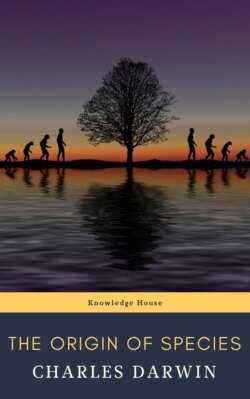Читать книгу The Origin Of Species - Чарлз Дарвин, Knowledge house - Страница 21
На сайте Литреса книга снята с продажи.
7. Summary
ОглавлениеFinally, varieties cannot be distinguished from species—except, first, by the discovery of intermediate linking forms; and, secondly, by a certain indefinite amount of difference between them; for two forms, if differing very little, are generally ranked as varieties, notwithstanding that they cannot be closely connected; but the amount of difference considered necessary to give to any two forms the rank of species cannot be defined. In genera having more than the average number of species in any country, the species of these genera have more than the average number of varieties. In large genera the species are apt to be closely but unequally allied together, forming little clusters round other species. Species very closely allied to other species apparently have restricted ranges. In all these respects the species of large genera present a strong analogy with varieties. And we can clearly understand these analogies, if species once existed as varieties, and thus originated; whereas, these analogies are utterly inexplicable if species are independent creations.
We have also seen that it is the most flourishing or dominant species of the larger genera within each class which on an average yield the greatest number of varieties, and varieties, as we shall hereafter see, tend to become converted into new and distinct species. Thus the larger genera tend to become larger; and throughout nature the forms of life which are now dominant tend to become still more dominant by leaving many modified and dominant descendants. But, by steps hereafter to be explained, the larger genera also tend to break up into smaller genera. And thus, the forms of life throughout the universe become divided into groups subordinate to groups.
